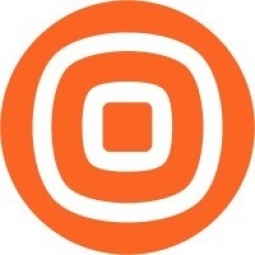Technology Category
- Networks & Connectivity - 5G
- Platform as a Service (PaaS) - Application Development Platforms
Applicable Industries
- Buildings
- Finance & Insurance
Applicable Functions
- Sales & Marketing
Use Cases
- Chatbots
- Machine to Machine Payments
About The Customer
Mukuru is a leading Next Gen Financial Services Platform that offers affordable and reliable financial services to an emerging customer base of over 10 million across Africa, Asia, and Europe. With over 100 million transactions to date, Mukuru was built to provide international money transfers and has since developed a set of services to address the broader financial needs of its customers. The company now operates in over 50 countries and across over 300 remittance corridors. Mukuru has been named one of the FXC Intelligence Top 100 Cross-Border Payments Companies in 2022 and is listed as one of the top eight global, independently owned businesses in the remittances space.
The Challenge
Mukuru, a leading financial services platform, was facing a challenge in making its services more accessible to its customers. The company, which primarily serves the emerging African market and migrant workers, offers affordable international money transfers and other financial services. Prior to 2019, the channels available to customers included the Mukuru mobile site, app, and USSD. However, the company wanted to provide an additional channel that offered better functionality than USSD and was frequently used by its customers. The goal was to make transactions and support more accessible and efficient for its users.
The Solution
To address this challenge, Mukuru introduced a WhatsApp Business chatbot for quick, real-time service and support. Given that WhatsApp is one of the most popular communication channels in Africa and the number one chat app globally, it was an obvious choice. The chatbot allows customers to manage their money transfers faster without the need for a live agent. Customers can start a WhatsApp chat with the company to sign up for the service, and once the chatbot responds, they receive menu options for various services including creating a Mukuru account, transferring money, managing their Mukuru Wallet, and more. The company also connected WhatsApp to its contact center to enable customers to chat with an agent when necessary. To ensure compliance, Mukuru collected opt-ins from customers before sending any notifications over WhatsApp.
Operational Impact
Quantitative Benefit

Case Study missing?
Start adding your own!
Register with your work email and create a new case study profile for your business.
Related Case Studies.

Case Study
Energy Saving & Power Monitoring System
Recently a university in Taiwan was experiencing dramatic power usage increases due to its growing number of campus buildings and students. Aiming to analyze their power consumption and increase their power efficiency across 52 buildings, the university wanted to build a power management system utilizing web-based hardware and software. With these goals in mind, they contacted Advantech to help them develop their system and provide them with the means to save energy in the years to come.

Case Study
Intelligent Building Automation System and Energy Saving Solution
One of the most difficult problems facing the world is conserving energy in buildings. However, it is not easy to have a cost-effective solution to reduce energy usage in a building. One solution for saving energy is to implement an intelligent building automation system (BAS) which can be controlled according to its schedule. In Indonesia a large university with a five floor building and 22 classrooms wanted to save the amount of energy being used.

Case Study
Powering Smart Home Automation solutions with IoT for Energy conservation
Many industry leaders that offer Smart Energy Management products & solutions face challenges including:How to build a scalable platform that can automatically scale-up to on-board ‘n’ number of Smart home devicesData security, solution availability, and reliability are the other critical factors to deal withHow to create a robust common IoT platform that handles any kind of smart devicesHow to enable data management capabilities that would help in intelligent decision-making

Case Study
Real-time In-vehicle Monitoring
The telematic solution provides this vital premium-adjusting information. The solution also helps detect and deter vehicle or trailer theft – as soon as a theft occurs, monitoring personnel can alert the appropriate authorities, providing an exact location.“With more and more insurance companies and major fleet operators interested in monitoring driver behaviour on the grounds of road safety, efficient logistics and costs, the market for this type of device and associated e-business services is growing rapidly within Italy and the rest of Europe,” says Franco.“The insurance companies are especially interested in the pay-per-use and pay-as-you-drive applications while other organisations employ the technology for road user charging.”“One million vehicles in Italy currently carry such devices and forecasts indicate that the European market will increase tenfold by 2014.However, for our technology to work effectively, we needed a highly reliable wireless data network to carry the information between the vehicles and monitoring stations.”

Case Study
Protecting a Stadium from Hazardous Materials Using IoT2cell's Mobility Platform
There was a need for higher security at the AT&T Stadium during the NFL draft. There was a need to ensure that nuclear radiation material was not smuggled inside the stadium. Hazmat materials could often be missed in a standard checkpoint when gaining entry into a stadium.








